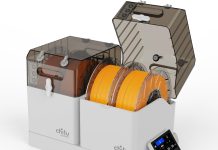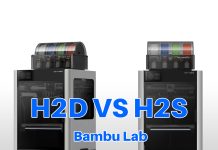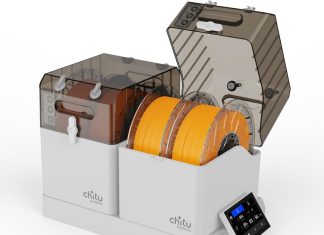In the fast-evolving world of 3D printing, personalization is becoming increasingly important. Among the many options available to creators, the Anycubic M7 Pro resin printer stands out for its versatility and potential for customization. Whether you’re a hobbyist tinkering with your first prints or an experienced designer crafting professional-quality models, tailoring the resin profile of your Anycubic M7 Pro can significantly enhance your printing experience, yielding unique outcomes that align with your artistic vision.
Understanding the Importance of Resin Profiles
Resin profiles are essential for determining how your printer processes material during a print. The settings within a resin profile control factors such as exposure time, layer height, and lift speed, all of which directly impact the quality and characteristics of the finished print. Customizing these parameters allows creators to optimize their prints for specific applications, whether that is high detail for miniatures, durability for functional parts, or flexibility for intricate designs.
Getting Started with Customization
Before diving into the world of resin profile customization, ensure your Anycubic M7 Pro is properly set up and calibrated. A well-calibrated printer will provide more consistent results as you experiment with different settings. The following steps outline how to begin customizing your resin profiles for extraordinary outcomes:
1. Research Your Materials
Each resin type behaves differently under various conditions. Before setting your custom profiles, familiarize yourself with the characteristics of the resin you intend to use. Manufacturers often provide recommended exposure times and other specifics to help you get started. This knowledge can form the foundation of your customization process.
2. Experiment with Exposure Times
The exposure time is one of the most critical settings to adjust. Longer exposure times can lead to improved layer adhesion and detail but might also result in over-curing, causing loss of sharpness and detail. On the other hand, shorter exposure times can enhance fine details but may lead to structural weaknesses. Start with the manufacturer’s recommendations and adjust incrementally, making sure to document your changes for comparison.
3. Optimize Layer Height
Layer height is another crucial parameter that significantly influences print quality. Thinner layers can produce smoother surfaces and finer details resulting in longer print times, while thicker layers can speed up production but may lead to a textured finish. Balancing time and quality is essential; for detailed models, consider layers as thin as 0.01mm, while thicker layers (0.05mm-0.1mm) may suffice for less intricate pieces.
4. Adjust Lift Speed and Distance
Lift speed and distance impact how the resin is peeled away from the build plate, affecting both print quality and speed. A slower lift speed can help reduce failures and improve the surface finish by minimizing stress on the layers. Additionally, adjusting the lift distance can prevent suction issues that may cause layer detachments or print failures.
5. Loop in Community Knowledge
The 3D printing community is a fantastic resource for enhancing your understanding of resin profiles. Forums, social media groups, and websites dedicated to 3D printing often include personal experiences and settings shared by other Anycubic M7 Pro users. Collaborating with other enthusiasts can provide insight into tried-and-true settings, helping speed up your learning curve.
Testing and Iteration
Once you’ve customized your resin profile, the next step is testing. Start with small test prints to verify how your adjustments influence the final product. Pay attention to details like surface finish, layer adhesion, and any issues that arise during the drying process. Don’t be discouraged by failures; each misstep provides valuable information that contributes to a refined profile.
Achieving Unique Results
The beauty of customizing resin profiles lies in your newfound ability to achieve unique prints tailored to your specific needs. Whether you’re sculpting highly-detailed figurines, creating functional prototypes, or producing artistic pieces, altering exposure times, lift speeds, and layer heights can yield results that reflect your personal style and requirements. Additionally, taking the time to optimize profiles can enhance not only the beauty of your prints but also their structural integrity, making them more functional and durable.
Conclusion
Customization at its best can take your 3D printing projects to the next level, and the Anycubic M7 Pro resin printer provides the tools necessary to accomplish that. By understanding and tailoring your resin profiles, you open up a world of creative possibilities. Through research, experimentation, and collaboration with the community, you can unlock the potential of your Anycubic M7 Pro, ensuring that your prints are not only unique but a true reflection of your talent and creativity. Happy printing!






